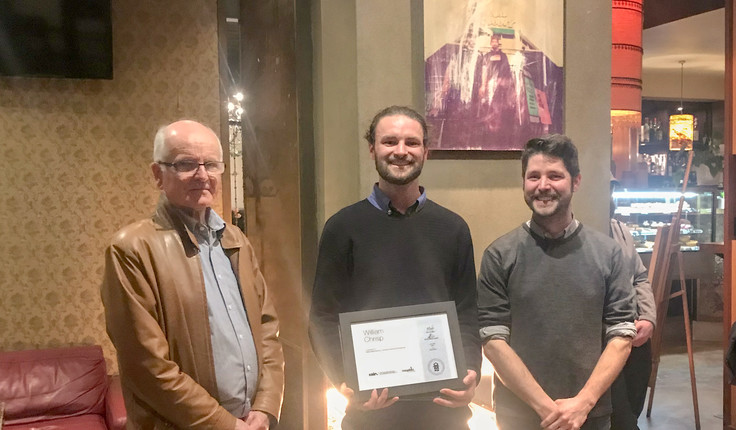News
NZILA Vectorworks Student Scholarship awarded to...
Posted 25 06 2020
in News

Thanks to Megabits for sponsoring this scholarship
Keen photographer Will Chrisp has always been taken with the beauty of a starry sky. In times of stress the landscape architecture Masters student has found it soothing and grounding.
But he’s also become increasingly aware of the impact of light pollution on our physical, mental and spiritual health. So he’s writing his thesis on how landscape can facilitate a night time experience so that the naturally dark environment can be enjoyed.
And it’s that research that’s won him this year’s NZILA Vectorworks Student Scholarship. His prize is $1500 and a year’s free use of Vectorworks Designer 2020, which includes the modules: Landmark, Architect & Spotlight.
Chrisp says the software will be valuable in helping him visualise the impact of topography, vegetation and lighting on different spaces.
“This research addresses how landscape can facilitate a night time experience so that the naturally dark environment can be enjoyed,” the Victoria University student says. “It analyses how lighting and the physical elements in an outdoor space can be better utilised to improve visibility of the stars, and discusses how the cultural history embedded in the night sky can be brought forward.”
Marilyn Best, business manager of Megabits which has awarded the scholarship, says Chrisp’s research was chosen because it was a “relevant and important” topic for the landscape profession and could be applied to projects across the country. “People will be interested to understand and read the outcomes of his findings,” Best says.
“As urban growth continues to grow, and questions rise about the impact that has on the night sky this is a very topical issue for not only Wellington but for the rest of NZ and even the world.
William has demonstrated through his application that he has thought through his proposal and considered all elements and layers that can be explored and will add value to his research i.e. his research includes an important grounding in Tatai Arorangi (Maori Astronomical Knowledge) with the potential to provide the link between landscape and this traditional and cultural practices.
Urbanisation over the last 70 years has increased the development of high rise buildings, outdoor public spaces and street lighting. As a result, Chrisp says, 80% of the world’s population is living under light polluted skies.
“In Landscape Architecture, public spaces tend to be designed for use during the day, with outdoor lighting used in ways that only contribute to the ‘ground’ experience. Though we consider it to be a part of the natural environment, the night sky is neglected as being something a public space can be used to enjoy.”
Chrisp says Tatai Arorangi was once embedded in much of the early Maori settlers life and culture in New Zealand. They relied on the stars for all aspects of life such as when to plant crops, when to pray and how to navigate. Much of this knowledge was lost through the impacts of colonisation. However over the last fifty years there has been a resurgence within Maoridom to once again integrate the stars into their daily life.
His research asks two questions:
How do we design our public spaces to provide an equal and enhanced experience for both day and night?
How can we improve the relationship between lighting and the physical elements in our outdoor public spaces to create better conditions for star gazing, without hindering the sense of comfort lighting provides?
The design hopes to create a dual experience, where public spaces offer an opportunity to enjoy our naturally dark environment as well as what we see during the day, Chrisp says. Looking out over a star filled sky, is an incredibly valuable activity in helping us to deal with the stress and anxiety life can bring. There is the hope that this research will bring greater appreciation and thought to the night sky within our practice as part of the “landscape”.
The NZILA Vectorworks Landmark Student Scholarship was established in 2018 to support students studying Landscape Architecture in New Zealand whose research promotes the profession or actively contributes to new knowledge in the discipline of landscape architecture.
19 Dec
Christmas break 2025

see you from 12 January
As we wrap up another big year, we’re taking a moment to pause, breathe, and enjoy a well-earned break. Meri …
18 Dec
President’s update

December 2025
Earlier this month I attended the Ngā Aho Māori Design Professionals Wānanga-ā-Tau at Te Aranga Marae in Flaxmere. Tuia Pito …
18 Dec
Awards 2026 update

An update as we warm up for the 2026 Awards kaupapa. Submissions will open in March and will run for …
Events calendar
Full 2025 calendar